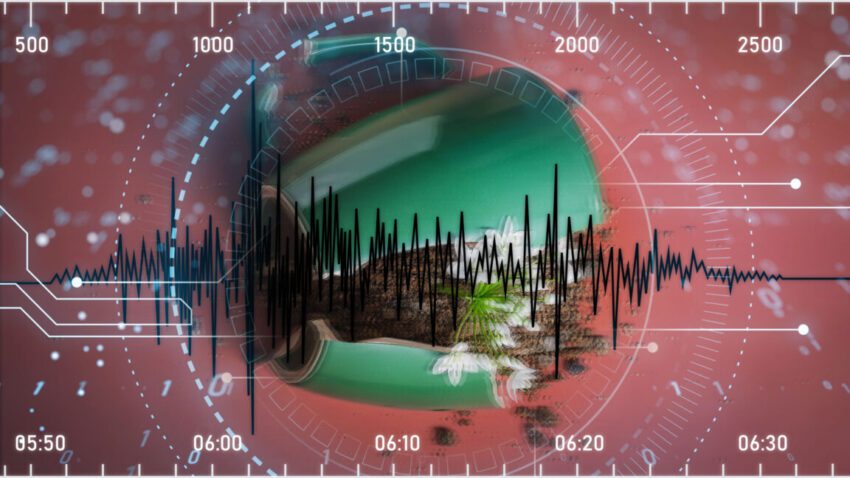
like putting on glasses for the first Recent advancements in artificial intelligence (AI) are revolutionizing earthquake detection, enabling the identification of even the smallest seismic events that would have previously gone unnoticed.
like putting on glasses for the first
The Significance of Small Earthquakes
On January 1, 2008, at 1:59 AM, a minor earthquake struck Calipatria, California. With a magnitude of -0.53, this seismic event was so subtle that residents likely felt nothing—similar to the vibrations caused by a passing truck. However, this earthquake is noteworthy not for its size but for the technology that allows us to detect it. The ability to identify such small tremors is crucial for understanding the Earth’s geological behavior and assessing future hazards.
Small earthquakes, often referred to as microseisms, provide valuable insights into the Earth’s crust. They can reveal information about fault lines, tectonic movements, and the geological composition of an area. Historically, these minor events were often overlooked due to their low magnitude, but advancements in technology are changing this narrative.
The Evolution of Earthquake Detection
Traditional Methods
Traditionally, earthquake detection relied heavily on human analysts who interpreted seismic data from various sensors. This process was labor-intensive and time-consuming, often leading to delays in reporting and analysis. Analysts would sift through vast amounts of data, identifying patterns and distinguishing between actual seismic events and background noise.
As technology progressed, simpler computer programs were developed to assist in this process. These programs could automate some of the more straightforward tasks, such as filtering out noise and identifying potential seismic events. However, they still required significant human oversight and intervention.
The Role of Machine Learning
In recent years, machine learning has emerged as a game-changer in the field of seismology. By leveraging vast datasets and advanced algorithms, AI tools can now detect earthquakes with remarkable accuracy and speed. These machine learning models are trained on extensive historical seismic data, allowing them to recognize patterns that may be imperceptible to human analysts.
One of the most significant advantages of AI in earthquake detection is its ability to identify smaller earthquakes, especially in noisy environments such as urban areas. Traditional methods often struggled to differentiate between seismic events and the vibrations caused by human activity, such as traffic or construction. However, AI algorithms can filter out this noise, enabling them to detect even the faintest tremors.
How AI Improves Detection
Enhanced Sensitivity
AI tools can detect earthquakes that are significantly smaller than those identified by human analysts. For instance, while a human might only recognize events above a certain magnitude, machine learning models can identify tremors that fall below this threshold. This enhanced sensitivity is crucial for monitoring seismic activity in regions prone to earthquakes.
Moreover, the ability to detect smaller earthquakes can lead to a better understanding of seismic patterns. By analyzing these minor events, researchers can gain insights into the behavior of fault lines and the potential for larger, more destructive earthquakes in the future.
Real-Time Analysis
Another significant advantage of AI is its capacity for real-time analysis. Traditional methods often involved delays in data processing and reporting, which could hinder timely responses to seismic events. In contrast, AI algorithms can analyze seismic data as it is collected, providing immediate insights and alerts.
This real-time capability is particularly beneficial for emergency response teams. In the event of a significant earthquake, timely information can be crucial for coordinating rescue efforts and mitigating damage. AI-driven systems can provide rapid assessments of seismic activity, helping authorities make informed decisions in the aftermath of an earthquake.
Implications for Seismology
Improved Hazard Assessment
The integration of AI into earthquake detection has profound implications for hazard assessment. By identifying smaller earthquakes and analyzing their patterns, researchers can better understand the risks associated with specific fault lines and regions. This information is invaluable for urban planning, construction, and disaster preparedness.
For example, cities located near active fault lines can use AI-driven insights to implement more stringent building codes and develop emergency response plans. By understanding the frequency and magnitude of smaller earthquakes, urban planners can make informed decisions that enhance public safety.
Global Monitoring
The advancements in AI technology also facilitate global monitoring of seismic activity. With the ability to process vast amounts of data from multiple sources, AI can provide a comprehensive picture of seismic events worldwide. This capability is particularly important for regions that may not have extensive seismic monitoring infrastructure.
By analyzing data from various locations, AI can identify patterns and correlations that may not be apparent when examining individual events. This holistic approach can enhance our understanding of global seismic activity and improve our ability to predict future events.
Challenges and Considerations
Data Quality and Availability
While AI presents numerous advantages for earthquake detection, it is not without challenges. One significant concern is the quality and availability of seismic data. Machine learning models rely on extensive datasets for training, and the accuracy of these models is directly linked to the quality of the data used.
In regions with limited seismic monitoring infrastructure, obtaining high-quality data can be challenging. This limitation may hinder the effectiveness of AI-driven detection systems in certain areas. Ongoing efforts to improve data collection and sharing practices are essential to maximize the potential of AI in seismology.
Interpretation of Results
Another consideration is the interpretation of results generated by AI algorithms. While these models can identify patterns and detect seismic events, the interpretation of these findings still requires human expertise. Seismologists must analyze the results and provide context to ensure accurate assessments of seismic activity.
Furthermore, there is a risk of over-reliance on AI systems. While these tools can enhance detection capabilities, they should complement—not replace—human expertise in seismology. A collaborative approach that combines the strengths of AI with the insights of experienced analysts is crucial for effective earthquake monitoring.
Future Directions
The integration of AI into earthquake detection is still in its early stages, and ongoing research is essential to unlock its full potential. Future developments may include:
- Enhanced Algorithms: Continued advancements in machine learning algorithms could improve the accuracy and sensitivity of earthquake detection systems.
- Integration with Other Technologies: Combining AI with other technologies, such as satellite imagery and ground-based sensors, may provide a more comprehensive understanding of seismic activity.
- Global Collaboration: Increased collaboration among researchers, governments, and organizations can facilitate data sharing and improve monitoring efforts worldwide.
Conclusion
The advancements in AI technology are transforming the field of earthquake detection, enabling the identification of smaller seismic events that were previously overlooked. By automating the detection process and providing real-time analysis, AI tools enhance our understanding of seismic activity and improve hazard assessment. While challenges remain, the potential benefits of AI in seismology are significant, paving the way for a safer and more informed future.
Source: Original report
Was this helpful?
Last Modified: October 10, 2025 at 4:36 pm
0 views















